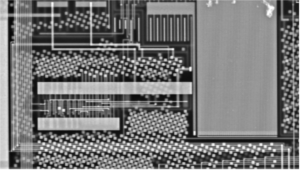Unlock MCU PIC18F6490 Firmware
Unlock MCU PIC18F6490 and readout the embedded firmware out from its memory, copy the program and data to blank Microcontroller, the content will be same as original Microcontroller;
Special Microcontroller Features:
· C Compiler Optimized Architecture:
– Optional extended instruction set designed to optimize re-entrant code
· 1000 Erase/Write Cycle Flash Program Memory Typical
· Flash Retention: 100 Years Typical
· Priority Levels for Interrupts
· 8 x 8 Single-Cycle Hardware Multiplier
· Extended Watchdog Timer (WDT):
– Programmable period from 4 ms to 132s
– 2% stability over VDD and temperature
· In-Circuit Serial Programming™ (ICSP™) via Two Pins
· In-Circuit Debug (ICD) via Two Pins
· Wide Operating Voltage Range: 2.0V to 5.5V
This family offers the advantages of all PIC18 microcontrollers – namely, high computational performance at an economical price. In addition to these features, the PIC18F6490 family introduces design enhancements that make these microcontrollers a logical choice for many high-performance, power-sensitive applications.
All of the devices in the PIC18F6490 family incorporate a range of features that can significantly reduce power consumption during operation. Key items include:
· Alternate Run Modes: By clocking the controller from the Timer1 source or the internal oscillator block, power consumption during code execution can be reduced by as much as 90%.
· Multiple Idle Modes: The controller can also run with its CPU core disabled, but the peripherals still active. In these states, power consumption can be reduced even further – to as little as 4% of normal operation requirements.
· On-the-Fly Mode Switching: The power-managed modes are invoked by user code during operation, allowing the user to incorporate power-saving ideas into their application’s software design.
· Lower Consumption in Key Modules: The power requirements for both Timer1 and the Watchdog Timer have been reduced by up to 80%, with typical values of 1.1 ìA and 2.1 ìA, respectively.
Tags: unlock mcu source archive,unlock mcu source code,unlock mcu source content,unlock mcu source data,unlock mcu source eeprom,unlock mcu source file,unlock mcu source firmware,unlock mcu source information,unlock mcu source memory,unlock mcu source program



